
Northern Mindanao is an administrative region in the Philippines, designated as Region X. It comprises five provinces: Bukidnon, Camiguin, Misamis Occidental, Misamis Oriental, and Lanao del Norte, and two cities classified as highly urbanized, all occupying the north-central part of Mindanao island, and the island-province of Camiguin. The regional center is Cagayan de Oro. Lanao del Norte was transferred to Northern Mindanao from Region XII by virtue of Executive Order No. 36 in September 2001.

Misamis Oriental, officially the Province of Misamis Oriental, is a province located in the region of Northern Mindanao in the Philippines. Its capital, largest city and provincial center is the city of Cagayan de Oro, which is governed independently from the province.
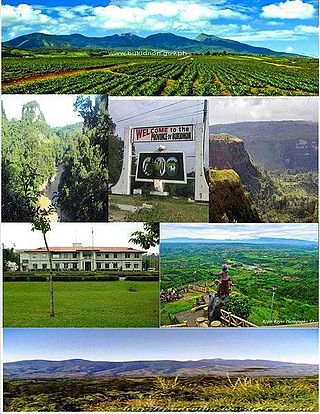
Bukidnon, officially the Province of Bukidnon, is a landlocked province in the Philippines located in the Northern Mindanao region. Its capital is the city of Malaybalay. The province borders, clockwise from the north, Misamis Oriental, Agusan del Sur, Davao del Norte, Cotabato, Lanao del Sur, and Lanao del Norte. According to the 2020 census, the province is inhabited by 1,541,308 residents. The province is composed of 2 component cities and 20 municipalities. It is the third largest province in the country in terms of total area of jurisdiction behind Palawan and Isabela respectively.

Gingoog, officially the City of Gingoog, is a 1st class component city in the province of Misamis Oriental, Philippines. According to the 2020 census, it has a population of 136,698 people.
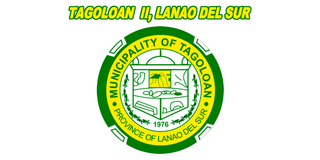
Tagoloan, officially the Municipality of Tagoloan and also known as Tagoloan II, is a 4th class municipality in the province of Lanao del Sur, Philippines. According to the 2020 census, it has a population of 12,602 people. It is the poorest municipality in the whole country of the Philippines.

Impasugong, officially the Municipality of Impasugong, is a 1st class municipality in the province of Bukidnon, Philippines. According to the 2020 census, it has a population of 53,863 people.

Malitbog, officially the Municipality of Malitbog, is a 2nd class municipality in the province of Bukidnon, Philippines. According to the 2020 census, it has a population of 26,741 people.
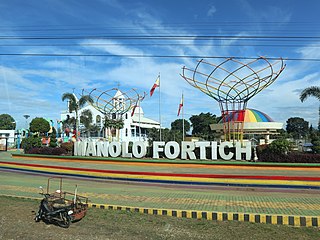
Manolo Fortich, officially the Municipality of Manolo Fortich, is a 1st class municipality in the province of Bukidnon, Philippines. According to the 2020 census, it has a population of 113,200 people.

Sumilao, officially the Municipality of Sumilao, is a 4th class municipality in the province of Bukidnon, Philippines. According to the 2020 census, it has a population of 29,531 people.
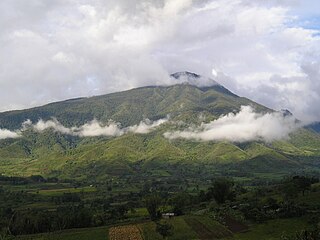
Claveria, officially the Municipality of Claveria, is a 1st class municipality in the province of Misamis Oriental, Philippines. According to the 2020 census, it has a population of 52,478 people.

Gitagum, officially the Municipality of Gitagum, is a 5th class municipality in the province of Misamis Oriental, Philippines. The municipality is bounded on the north by Mindanao Sea, on the east by the Municipality of Laguindingan, on the south by the Municipality of Alubijid and on the west the Municipality of Libertad. It is approximately 40 km. away from Cagayan de Oro. According to the 2020 census, it has a population of 17,920 people.

Balingoan, officially the Municipality of Balingoan, is a 5th class municipality in the province of Misamis Oriental, Philippines. According to the 2020 census, it has a population of 11,020 people.

El Salvador, officially the City of El Salvador, is a 6th class component city in the province of Misamis Oriental, Philippines. According to the 2020 census, it has a population of 58,771 people.
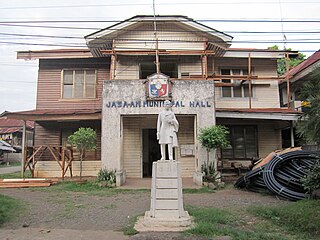
Jasaan, officially the Municipality of Jasaan, is a 2nd class municipality in the province of Misamis Oriental, Philippines. According to the 2020 census, it has a population of 57,055 people.

Lugait, officially the Municipality of Lugait, is a 2nd class municipality in the province of Misamis Oriental, Philippines. According to the 2020 census, it has a population of 20,559 people.

Opol, officially the Municipality of Opol, is a 2nd class municipality in the province of Misamis Oriental, Philippines. According to the 2020 census, it has a population of 66,327 people.

Sugbongcogon, officially the Municipality of Sugbongcogon, is a 5th class municipality in the province of Misamis Oriental, Philippines. According to the 2020 census, it has a population of 9,764 people. Sugbongcogon became an independent municipality on June 22, 1963.
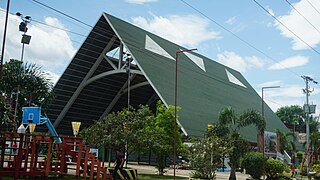
Villanueva, officially the Municipality of Villanueva, is a 2nd class municipality in the province of Misamis Oriental, Philippines. According to the 2020 census, it has a population of 40,419 people.
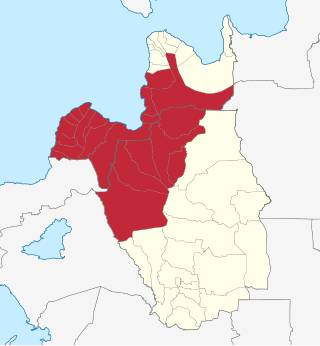
Metropolitan Cagayan de Oro, also known as Metro Cagayan de Oro, is the fourth largest metropolitan area in the Philippines. It is located on the northern coast of Mindanao, and comprises the two chartered cities of Cagayan de Oro and El Salvador and the fourteen municipalities of Misamis Oriental which are Alubijid, Balingasag, Claveria, Gitagum, Initao, Jasaan, Laguindingan, Libertad, Lugait, Manticao, Naawan, Opol, Tagoloan, and Villanueva and the six municipalities of Bukidnon which are Manolo Fortich, Baungon, Libona, Malitbog, Sumilao and Talakag. According to the 2015 Philippine census, Metro Cagayan de Oro has a population of 1,687,159 people.
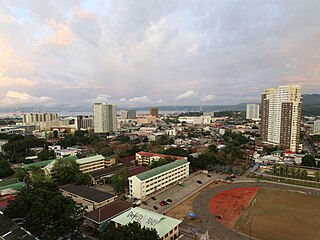
Cagayan de Oro (CDO), officially the City of Cagayan de Oro, is a 1st class highly urbanized city in the region of Northern Mindanao, Philippines. It is the capital of the province of Misamis Oriental where it is geographically situated but governed administratively independent from the provincial government. According to the 2020 census, it has a population of 728,402 people. Cagayan de Oro also serves as the regional center and business hub of Northern Mindanao, and part of the growing Metropolitan Cagayan de Oro area, which includes the city of El Salvador, the towns of Opol, Alubijid, Laguindingan, Gitagum, Lugait, Naawan, Initao, Libertad and Manticao at the western side, and the towns of Tagoloan, Villanueva, Jasaan, Claveria and Balingasag at the eastern side.

























